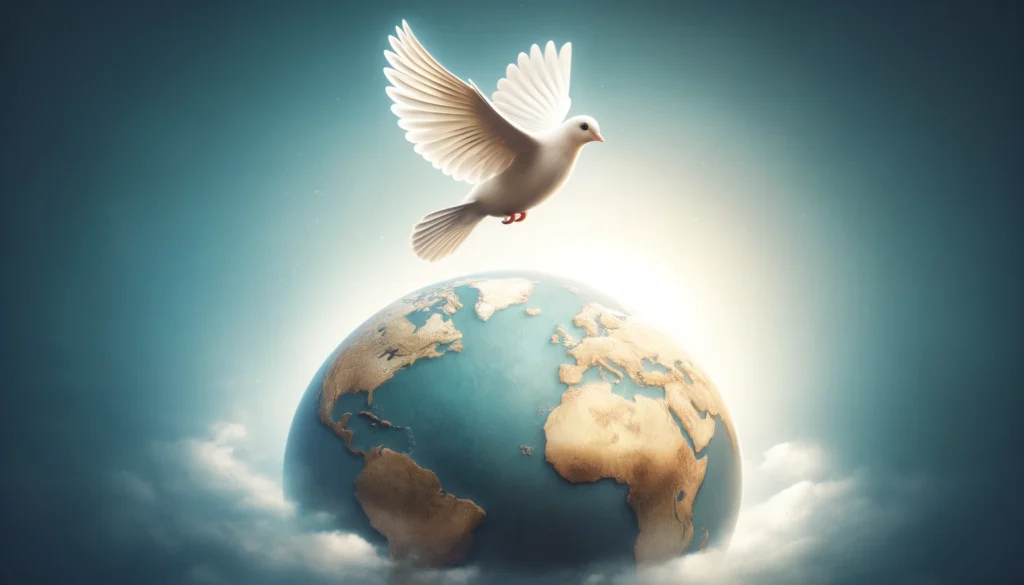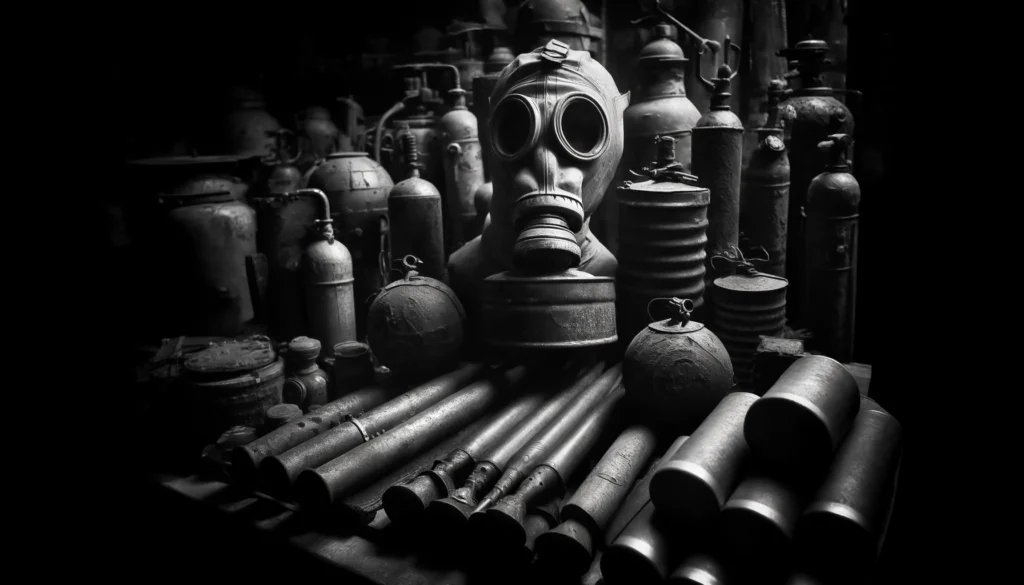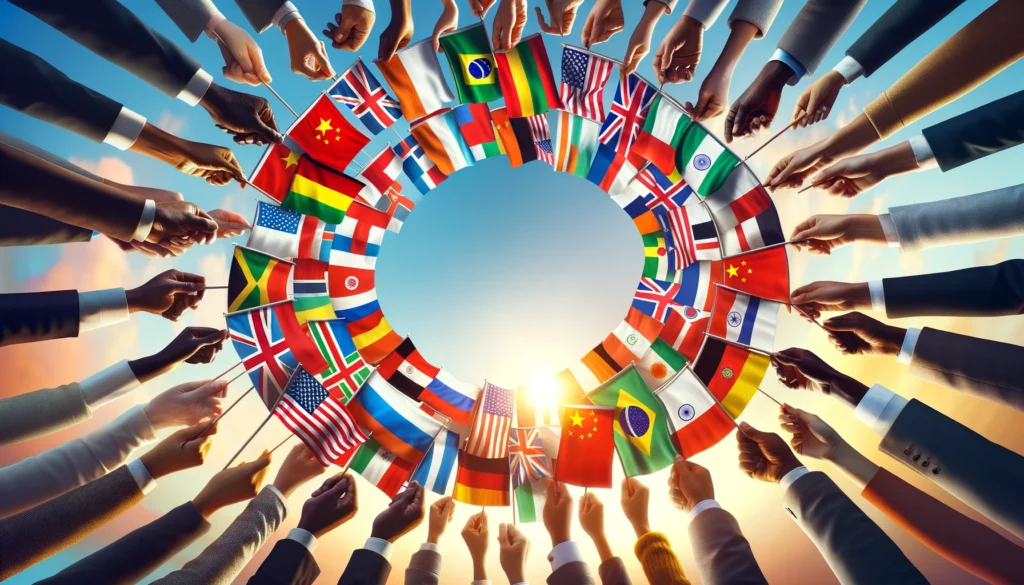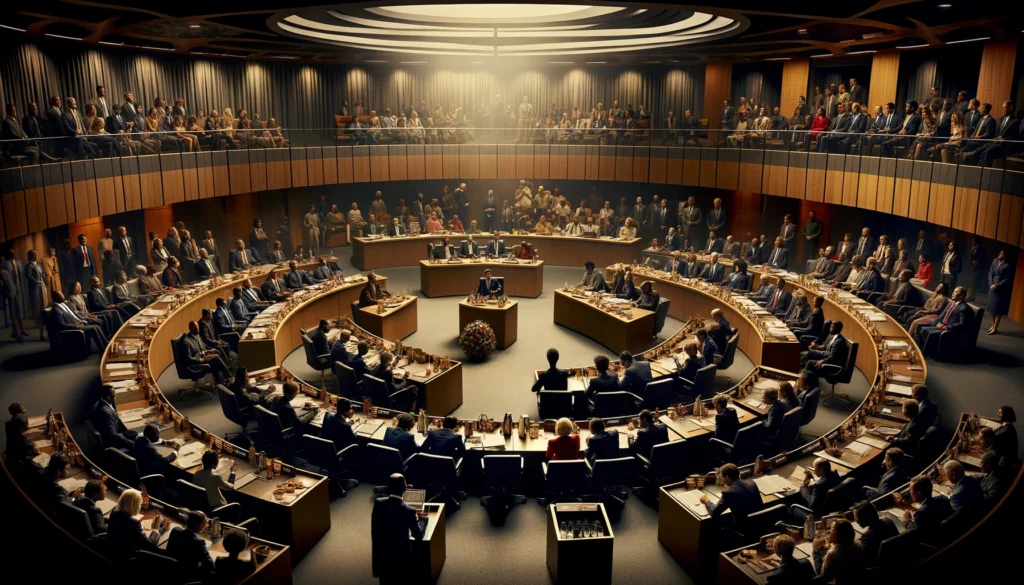The Chemical Weapons Convention (CWC) stands as a critical accord in the realm of international security, aiming to eliminate the threat posed by chemical weapons. Effective from April 29, 1997, this treaty has been a cornerstone in the global effort to promote peace and ensure that the horrors of chemical warfare do not repeat themselves.
Background of the Chemical Weapons Convention
Chemical weapons, defined by their deliberate use of toxic chemicals to inflict harm, have been historically notorious for their devastating effects on both the environment and human health. Their dangerous legacy is highlighted by their use in World War I and other conflicts, leading to catastrophic casualties and long-term ecological damage. This grim history underlined the urgent need for a comprehensive international treaty to ban such weapons unequivocally.

Key Features of the Convention
The CWC’s main objectives are clear: prohibit the production, storage, and use of chemical weapons. It compels member countries to destroy their chemical weapons stockpiles and production facilities under strict timelines, a monumental task that demands rigorous verification and compliance mechanisms. This treaty not only bans offensive operations but also places stringent controls on chemicals that could be used in weapon production, monitoring their use in industries across the globe.
Global Impact
To date, approximately 193 states-parties have ratified the CWC {One state has signed but not ratified (Israel)}, making it one of the most universally adhered-to disarmament treaties. Several nations have successfully met their obligations by destroying their chemical weapons arsenals, showcasing the CWC’s effectiveness in reducing these threats significantly. South Korea, Albania, and a number of other countries serve as exemplars, having completed their disarmament obligations, thus contributing to a safer world.

Challenges and Controversies
Despite its successes, the CWC faces numerous enforcement challenges. Ensuring compliance across such a broad array of signatories is inherently complex, with violations and controversies occasionally surfacing. Incidents in Syria and other hotspots have tested the Convention’s strength, revealing the difficulties in managing compliance in regions beset by conflict.
The Role of the OPCW
The Organisation for the Prohibition of Chemical Weapons (OPCW), awarded the Nobel Peace Prize in 2013, is the body charged with implementing and monitoring the CWC. The OPCW conducts inspections of chemical facilities, oversees the destruction of chemical weapons, and works to foster international cooperation to achieve the Convention’s goals. Its role is pivotal in ensuring the treaty’s integrity and effectiveness.

Current Status and Future Prospects
Recent developments continue to challenge the OPCW and the international community. The re-emergence of chemical weapons in conflict zones has prompted calls for stronger enforcement and more robust international responses. Looking forward, the CWC faces the dual challenge of addressing current violations and preparing for future threats, including those posed by non-state actors and technological advancements in weaponry.
Conclusion
The Chemical Weapons Convention is more than just a treaty; it is a testament to what can be achieved through international cooperation in the face of global threats. As it continues to enforce disarmament and prevent future atrocities, the CWC not only commemorates the resolve to never again use chemical weapons but also highlights the ongoing necessity for vigilance and unity in maintaining global peace and security.

Author’s Note
Thank you for reading this comprehensive guide on the Chemical Weapons Convention. Our goal is to educate and inform about the importance of global disarmament initiatives and the ongoing efforts to ensure a safer world. We hope this blog inspires you to learn more about and support international treaties that safeguard humanity from the horrors of chemical warfare.
G.C., Ecosociosphere contributor.
References and Further Reading
- “War of Nerves: Chemical Warfare from World War I to Al-Qaeda” by Jonathan Tucker – This book provides an extensive historical perspective on the development and use of chemical weapons.
- “Chemical Weapons Convention Chemicals Analysis: Sample Collection, Preparation and Analytical Methods” by Markku Mesilaakso – An in-depth look at the technical side of monitoring and analyzing chemical weapons.

